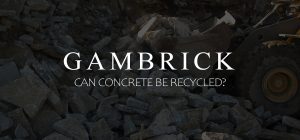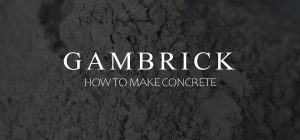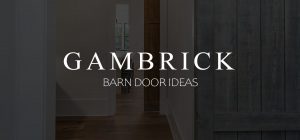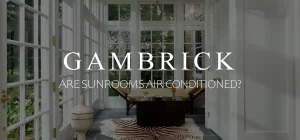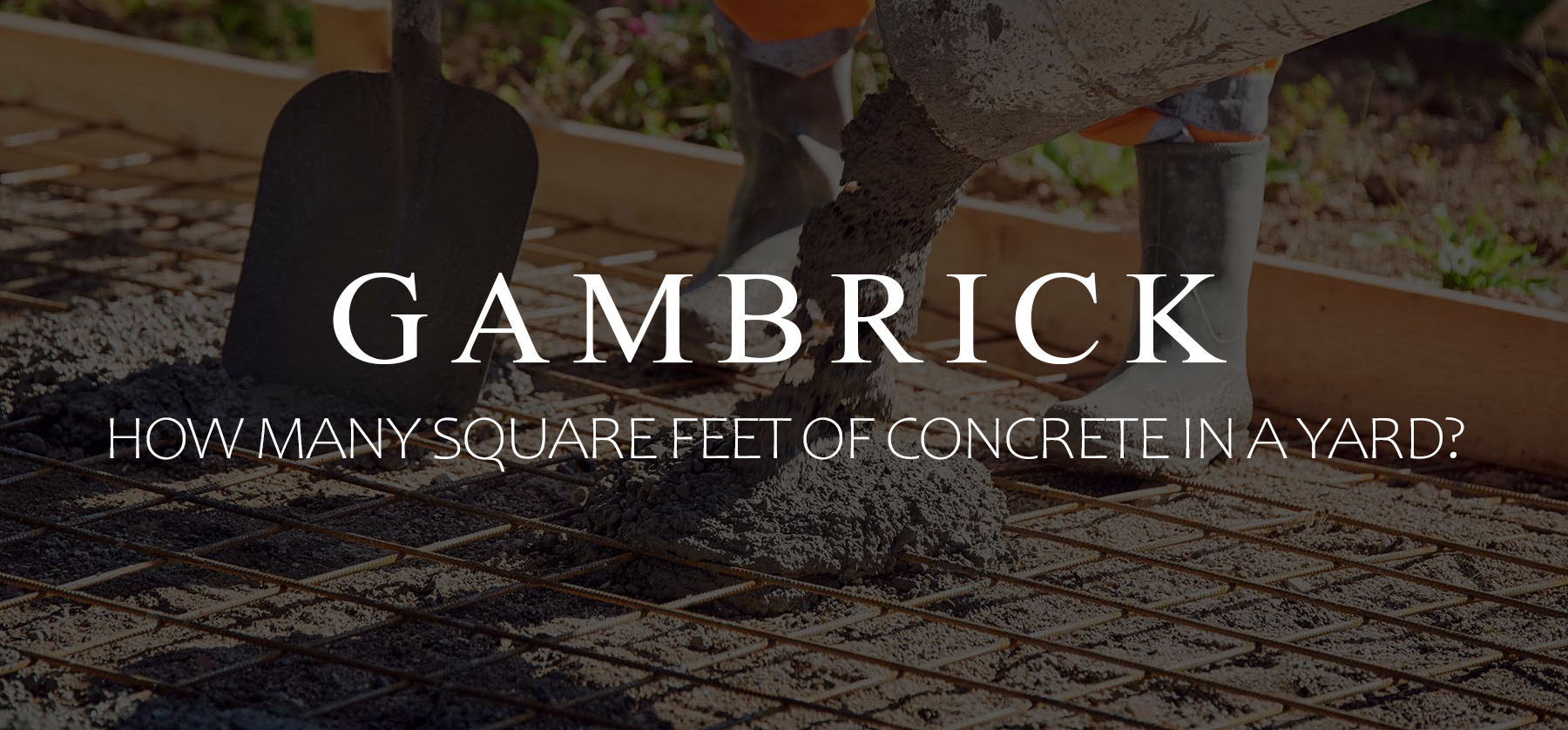
How Many Square Feet Of Concrete In A Yard?
One cubic yard of concrete = 81 square feet @ 4 inches thick. However at 6 inches thick a yard of concrete = 54 square feet of coverage. The thickness (depth) of the slab you’re pouring effects the amount of coverage you’ll get per yard. Calculating square footage is a 2 dimension measurement. Multiply the length of an area x its width and you get square footage (L x W). But calculating concrete coverage is about volume. This makes it a 3 dimensional measurement. You not only have to multiply the width x length of the area but also the depth (L x W x D).
A yard of concrete fills a cube that’s 3′ wide x 3′ long x 3′ high. That’s 27 cubic feet of concrete or 46,656 cubic inches. This is important to understand if you’re pouring countertops, a foundation, a pool, or making a cast concrete statue. Concrete work is figured in volumes, not simple square footage.
As you spread concrete it not only fills up square footage but it also fills depth. The thicker the slab you’re pouring the less square footage a yard of concrete will cover. In contrast, the thicker the slab the less square footage you’ll get per yard.
Before you pour concrete, forms are generally built or a hole is dug. This establishes not only the area’s square footage but also its depth. Measure the length, width and depth of the area and then then multiple them together using the formula L x W x D. This will give you the cubic feet or inches of the area.
Once you have that number it’s easy to figure out how much concrete you need and how many concrete pallets, trucks, or raw materials you need to order.

How Many Square Feet Will A Yard Of Concrete Cover?
Ready-mixed concrete is sold by volume not by square footage. Concrete’s volume is measured in cubic yards. It’s up to you to figure out how many yards you need and how many square feet the concrete you order will cover.
First, you determine the area of your concrete project (length x width) and then multiply the area by the slab’s thickness. This will give you the slab’s volume in cubic feet or inches.
To make things simpler I’ve already done the calculations for you. Reference the chart above or the numbers below.
One Cubic Yard of Concrete covers the following square feet:
- 1 Inches Thick: Covers 324 square feet
- 2 Inches Thick: Covers 162 square feet
- 3 Inches Thick: Covers 108 square feet
- 4 Inches Thick: Covers 81 square feet
- 5 Inches Thick: Covers 65 square feet
- 6 Inches Thick: Covers 54 square feet
- 7 Inches Thick: Covers 46 square feet
- 8 Inches Thick: Covers 41 square feet
- 9 Inches Thick: Covers 36 square feet
- 10 Inches Thick: Covers 32 square feet
- 11 Inches Thick: Covers 30 square feet
- 12 Inches Thick: Covers 27 square feet
- 13 Inches Thick: Covers 25 square feet
- 14 Inches Thick: Covers 23 square feet
How Many Square Feet Will A Yard Of Concrete Cover 3 Inches Thick?
3 Inches is an uncommon concrete slab thickness but we use it from time to time.
When a concrete slab is 3 inches thick you’ll get 109 square feet from 1 yard of concrete.
Here are a few common examples:
- A 10′ x 10′ concrete slab that’s 3″ thick takes .93 yards of concrete
- A 10′ x 12′ concrete slab that’s 3″ thick takes 1.11 yards of concrete
- A 20′ x 20′ concrete slab that’s 3″ thick takes 3.7 yards of concrete
- A 24′ x 24′ concrete slab that’s 3″ thick takes 5.33 yards of concrete
How Many Square Feet Will A Yard Of Concrete Cover 4 Inches Thick?
The most common thickness for a slab of concrete is 4 inches. This is the thickness of most concrete floors, patios, walkways and sidewalks.
When a concrete slab is 4 inches thick you’ll get 81 square feet from 1 yard of concrete.
Here are a few common examples:
- A 10′ x 10′ concrete slab that’s 4″ thick takes 1.23 yards of concrete
- A 10′ x 12′ concrete slab that’s 4″ thick takes 1.48 yards of concrete
- A 20′ x 20′ concrete slab that’s 4″ thick takes 4.94 yards of concrete
- A 24′ x 24′ concrete slab that’s 4″ thick takes 7.11 yards of concrete
How Many Square Feet Will A Yard Of Concrete Cover 6 Inches Thick?
The 2nd most common thickness for a slab of concrete is 6 inches. This is the thickness of most driveways I pour.
When a concrete slab is 6 inches thick you’ll get 54 square feet from 1 yard of concrete.
Here are a few common examples:
- A 10′ x 10′ concrete slab that’s 4″ thick takes 1.85 yards of concrete
- A 10′ x 12′ concrete slab that’s 4″ thick takes 2.22 yards of concrete
- A 20′ x 20′ concrete slab that’s 4″ thick takes 7.41 yards of concrete
- A 24′ x 24′ concrete slab that’s 4″ thick takes 10.67 yards of concrete
How Many Yards Of Concrete Do You Need?
Figuring out how many yards of concrete you need is easy using the chart above and the following basic formula:
Length X Width ÷ Square Feet Per Yard = Total Yardage Of Concrete.
- First, measure the length and width of area where you’ll be pouring concrete.
- Multiply the length x width to get the area’s square footage.
- Determine the depth of the area.
- Reference the chart above to determine how many square feet a yard of concrete covers at the depth you’re pouring.
- Divide the square footage per yard by the area’s square footage. The number you get is the yards of concrete you’ll need for the job.
For example, let’s assume you’re pouring a 50′ long driveway that’s 18′ wide and 5 inches deep. Multiply 50 x 18 and you get a driveway that’s 900 square feet.
Next, reference the chart above. At 5 inches deep a yard of concrete equals 65 square feet.
Finally, divide 900 / 65 and you get 13.84 yards of concrete.
I would order at least 14 yards.
Here are a few more examples:
At 4″ thick the formula looks like this:
- Length X Width ÷ 81 = yardage (example 24′ x 24′ = 576 sq. ft. ÷ 81 = 7.11 yards of concrete)
At 6″ thick the formula looks like this:
- Length X Width ÷ 54 = yardage (example 24′ x 24′ = 576 sq. ft. ÷ 54 = 10.66 yards of concrete)
Calculating the area’s square footage is easy. Simply multiply Length x Width. Then the number you divide by is determined by the slab’s depth.
If you’re repairing cracked concrete it’s a little harder to figure materials but the equation is the same. Length x width of the crack x depth gives you its volume. To repair large cracks, use fresh concrete or an epoxy, but use a DIY crack filler for small cracks.
Order More Concrete Than You Need
Calculating the exact amount of concrete you need is very hard to do. As a rule you should always order a bit more than you need to allow for things like spillage or an uneven sub-grade.
To allow for some spillage, form movement or uneven sub-grade I always order about 10% to 15% more concrete than I calculate when measuring. Most ready-mix suppliers charge a flat fee for delivery, for the amount of concrete you use and for extra time over an hour. So there’s no harm in ordering a little more even if you don’t need it. But ordering too little can ruin a concrete pour.
Ordering too much concrete isn’t a problem because you’re usually not charged for it. However ordering too little can ruin a concrete pour.
For irregular-shaped slabs, create a scale drawing of the area. Then break it down as much as possible into a series of rectangles and squares. Calculate those areas first. Then try and figure out all the oddly shaped areas and radius work.
How Many Bags Of Concrete Make A Yard?
The amount of concrete bags it takes to make a yard depends on the size of the bag. About 90 x 40lb bags, 75 x 50lb bags, 60 x 60lb bags, or 45 x 80lb concrete bags equal a yard of concrete.
Premixed bags of concrete are great for small to medium sized projects. Quikrete comes in 40 pound, 50 pound, 60 pound or 80 pound bags in a variety of strengths and mixes. Mixing bags on site is easy with basic tools like a tray, wheel barrow, hoe and shovel. Or you can use a powered cement mixer.
Calculating how many bags you need is easy if you use the chart below. First, figure out the amount of concrete you need. Then the size Quikrete bag you want to use. The chart will tell you how many bags you need to make a yard of concrete broken down by bag size.
| Bag Size | 1/4 cu yd | 1/2 cu yd | 3/4 cu yd | 1 cu yd |
|---|---|---|---|---|
| 40 lb bags | 23 | 45 | 68 | 90 |
| 50 lb bags | 18 | 36 | 54 | 75 |
| 60 lb bags | 15 | 30 | 45 | 60 |
| 80 lb bags | 14 | 25 | 36 | 45 |
- 90 Bags of 40 lb concrete make a yard of concrete.
- 75 Bags of 50 lb concrete make a yard or concrete.
- 60 Bags of 60 lb concrete make a yard or concrete.
- 45 Bags of 80 lb concrete make a yard or concrete.
For more info on how many bags of concrete make a yard visit our in depth post on it here.
How Is A Yard Of Concrete Measured?
Concrete is measured in volume and not square footage. The measurement is done in cubic yards. One cubic yard of concrete fills a square 3 feet wide x 3 feet deep x 3 feet high. (3′ x 3′ x 3′).
- There are 27 cubic feet in one cubic yard. A cubic foot is 12 inches wide x 12 inches deep by 12 inches high.
- There are 46,656 cubic inches in one cubic yard. A cubic inch is 1 inch wide x 1 inch deep x 1 inch high.
- A cubic yard is 36 inches wide x 36 inches deep x 36 inches high. 36″ x 36″ x 36″ = 46,656 cubic inches.
When you calculate yardage for your concrete patio, driveway, floor or sidewalk, you do it based on how thick (deep) the slab is.
When you order ready-mix concrete delivered by a concrete truck, you order it by the cubic yard.
A bag of concrete is measured by the cubic foot and not by the cubic yard. This is because of how small they are. So you need to calculate yourself how many you need based on the cubic feet of concrete you’re pouring.
- An 80 lb. bag of concrete yields 0.60 cubic feet (or 1.8 square feet @ 4″ thick)
- A 60 lb. bag of concrete yields 0.45 cubic feet (or 1.35 square feet @ 4″ thick)
- A 50 lb. bag of concrete yields 0.37 cubic feet (or 1.11 square feet @ 4″ thick)
- A 40 lb. bag of concrete yields 0.30 cubic feet (or 0.90 square feet @ 4″ thick)
Summary: How Many Square Feet Of Concrete In A Yard?
One cubic yard of concrete = 81 square feet @ 4 inches thick. However at 6 inches thick a yard of concrete = 54 square feet of coverage. The thickness (depth) of the slab you’re pouring effects the amount of coverage you’ll get per yard. Calculating square footage is a 2 dimension measurement. Multiply the length of an area x its width and you get square footage (L x W). But calculating concrete coverage is about volume. This makes it a 3 dimensional measurement. You not only have to multiply the width x length of the area but also the depth (L x W x D).
A yard of concrete fills a cube that’s 3′ wide x 3′ long x 3′ high. That’s 27 cubic feet of concrete or 46,656 cubic inches.
As you spread concrete over an area it not only fills up square footage but it also fills depth. The thicker the slab you’re pouring the less square footage a yard of concrete will cover. In contrast, the thicker the slab the less square footage you’ll get per yard.
Before you pour concrete, forms are generally built or a hole is dug. This establishes not only the area’s square footage but also its depth. Measure the length, width and depth of the area and then then multiple them together using the formula L x W x D. This will give you the cubic feet or inches of the area. Once you have that number it’s easy to figure out how much concrete you need.
If you have any questions about concrete, email or leave a comment down below.

John Mazzuca | About | More Posts |
Custom Home Builder
John Mazzuca is a custom home designer and builder at Gambrick with over 25 years experience in the construction industry. John has designed, built and/or remodeled hundreds of homes, small buildings, and commercial projects. He writes about business, real estate, home building, and household electronics. His work has been featured in Fox Business, Better Homes & Garden, House Beautiful, and more.

John Mazzuca | About | More Posts |
Custom Home Builder
John Mazzuca is a custom home designer and builder at Gambrick with over 25 years experience in the construction industry. John has designed, built and/or remodeled hundreds of homes, small buildings, and commercial projects. He writes about business, real estate, home building, and household electronics. His work has been featured in Fox Business, Better Homes & Garden, House Beautiful, and more.




